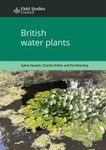About this book
Proceedings of the Third International Conference on Shellfish Restoration, held in Cork, Ireland, 28 September - 2 October 1999. Reprinted from HYDROBIOLOGIA, 2002.
Coastal populations of shellfish have been exploited by humans for millennia as an easily accessible source of fresh protein. Unfortunately, because the intertidal zone and the shallow coastal margins are so intertwined with man's activities, these shellfish stocks are now severely threatened around the world. Issues such as anthropogenic pollution, harmful algal blooms, overfishing, loss of habitat, and local stakeholder conflicts are all contributing to an alarming decline in the natural productivity of these regions.
There have now been five International Conferences on Shellfish Restoration (ICSR) since 1996, which have focused the attention on transferring scientific knowledge into practical remedial and restorative actions for shellfish populations. This volume represents a selection of contributions from the third meeting in Cork, Ireland, 1999. It includes papers on lobsters, sea urchins, whelks, clams, mussels, and scallops, with a thematic emphasis on ranching, disease, environmental interactions, fisheries management, aquaculture, restoration, toxic algal blooms, and toxicity testing.
This book is primarily targeted at postgraduate students, research scientists, coastal zone managers, non-government organisations, and government officials who wish to inform themselves of the opportunities for improving and conserving our coastal shellfish stocks.
Contents
Preface. List of reviewers. Management Tools for Bivalve Mollusc Fisheries. Shellfish ranching in the UK; C.A. Burton, et.al. Bivalve enhancement and restoration strategies in Florida, U.S.A; W.S.Arnold. Recovery of intertidal mussel beds in the Waddensea: use of habitat maps in the management of fishery;N.Dankers, et al. On the dynamics of the stocks of blue mussels (Mytilus edulis L) in the Danish Wadden Sea; S. Munch-Peters, P.S. Kristensen. The Biology and Management of Crustacean Fisheries. The role of lobsters ( Homarus spp.) hatcheries in ranching, restoration, remediation programmes; C.A. Burton. An Historical overview of the republic of Ireland's lobsters(Homarus gammarus Linnaeus) fisheries, with reference to European and North American ( Homarus americanus Milne Edwards lobster landings. R.M. Browne, et al. Searching for the early benthic phase (EBP) of the European lobster: a trans-European study of cobble fauna; A. Linnane, et al. Conflict between two inshore fisheries: for whelk (Buccinum undatum ) and brown crab (Cancer pagurus), in the southwest Irish Sea; E. Fahy. The Real and Potential Impacts of the Sea Urchin Exploitation. The commercial potential of the common sea urchin Echinus esculentus from the west coast of Scotland; M.S. Kelly et al. Implications of temporal and Spatial variability in Paracentrotus lividus populations to the associated commercial coastal fishery; D.K.A. Barnes, A.C. Cook. The impact of scallop drags on sea urchin populations and benthos in the bay of Fundy, Canada; S.M.S. Robinson, et al. Environmental Impact of Shellfish exploitation and Aqua-culture. Short term impact of blue mussel dredging (Mytilus edulis L) on the benthic community; P.Dolmer, et al. The effect of scallop dredging on Irish Sea benthos: experiments using closed area;C.Bradshaw, et al. Growth statistics of an exploited razor clam( Ensis siliqua) bed at Gormanstown, Co Meath, Ireland; E. Fahy, J. Gaffney. The influence of dredge design on the catch of Callista chione (Linnaeus, 1758); M.B. Gasper, et al. Preliminary study on the effects of oyster culturing structures on the birds in a sheltered Irish estuary; G. Hilgerloh, et al. Diseases and Harmful Algal Events Living with bonamiasis; Irish research since 1987; S.C. Culloty, M.F. Mulcahy. A satellite and field portrait of a Karenia mikimotoi bloom off the south coast of Ireland, August 1998;R.Raine, et al. Shellfish as Environmental Watchdogs and Monitors. The assessing of Pacific oyster (Crassostrea gigas ) rearing performances by the IFREMER/REMORA network; method and first result (1993-980 in Brittany, France; P.G. Fleury, et al. The role of bivalve mollusks as tools in estuarine sediment toxicity testing: A review; P.A. Byrne, J.O'Halloran. Subject Index.
Customer Reviews
































![Coraux Constructeurs de Récifs des Caraïbes [Coral Reef Builders of the Caribbean]](http://mediacdn.nhbs.com/jackets/jackets_resizer_medium/24/249211.jpg?height=150&width=99)













